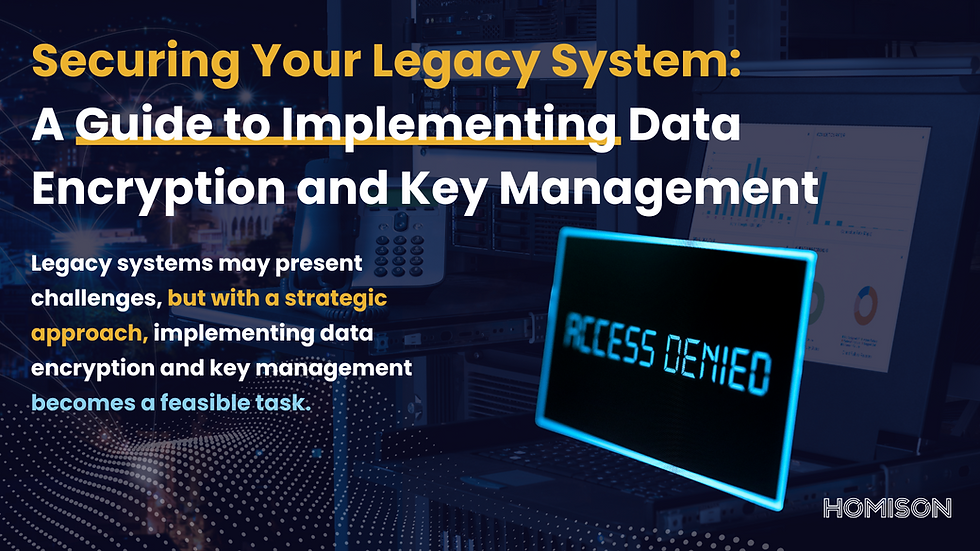
In the ever-evolving landscape of data security, safeguarding sensitive information in legacy systems is important. Legacy systems may present challenges, but with a strategic approach, implementing data encryption and key management becomes a feasible task. Here's a step-by-step guide to fortify your legacy system's security.
1. Assess Your Data and System
Before diving into encryption and key management, conduct a thorough assessment of your data and system. Understand the intricacies of data storage, access points, and required protection levels. Evaluate hardware, software, networks, protocols, and compliance requirements. This holistic assessment sets the foundation, revealing the scope, complexity, and potential risks of your encryption project.
2. Choose an Encryption Method and Algorithm
Tailor your encryption strategy based on data and system characteristics. Decide whether to encrypt data at rest, in transit, or in use, or a combination thereof. Select an encryption algorithm aligning with performance, security, and compatibility needs—considering factors like symmetric or asymmetric, block or stream, and AES or RSA. Fine-tune parameters such as encryption mode, padding, and initialization vector for optimal security.
3. Implement a Key Management System (KMS)
A robust Key Management System (KMS) is pivotal in ensuring encryption key security and availability. Implement KMS through hardware security modules (HSMs), software-based solutions, or cloud services. Adhere to best practices—utilize strong, unique keys, enforce access control, and maintain audit policies. Consider scalability and efficiency to streamline the encryption process.
4. Test and Monitor Encryption and Key Management
Post-implementation, thorough testing and continuous monitoring are imperative. Verify data security, key generation, and system compliance. Monitor activities, review logs, and promptly address any anomalies. Proactive testing and monitoring ensure a robust defense against potential threats.
5. Plan and Execute Migration and Transition
For those contemplating a migration or transition, ensure seamless compatibility of encryption and key management. Develop a detailed plan outlining steps, roles, responsibilities, timelines, and resources. Communicate changes to stakeholders and execute the transition meticulously, validating results and minimizing disruptions.
6. Review and Update Encryption and Key Management
Recognize that encryption and key management are dynamic processes. Regularly review and update practices to align with evolving data environments, emerging threats, and regulations. Conduct periodic assessments and audits, implementing improvements as needed. Stay informed about the latest trends and adopt suitable solutions to fortify your legacy system continually.
Why You Might Need an Expert in the Process
Experts like Homison emphasize the significance of this initial step, stressing that a comprehensive understanding of your system's landscape is essential for effective security measures. Expert manages to contribute insights into the encryption method and algorithm selection process, providing nuanced perspectives on balancing security requirements and system performance. Also, experts could weigh in on the critical role of KMS, sharing valuable experiences and tips on selecting the most suitable implementation method for your specific legacy system.
After implementation, experts could contribute real-world scenarios and best practices for effective testing and monitoring, enhancing the overall security posture, and sharing insights into successful migration and transition strategies, offering practical advice for a smooth and secure process. Lastly, experts could adapt proper security measures to changing landscapes.
In conclusion, securing a legacy system involves a comprehensive, strategic, and ongoing approach to data encryption and key management. By following these steps and incorporating expert insights, you can fortify your legacy system against modern threats, ensuring the longevity and security of your valuable data.

Comments